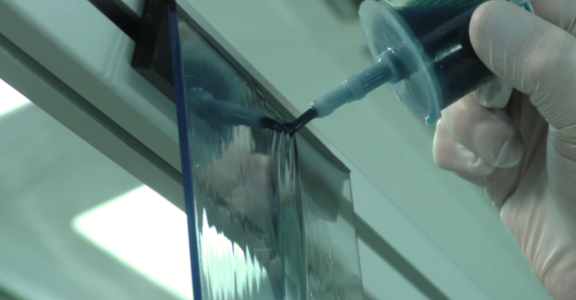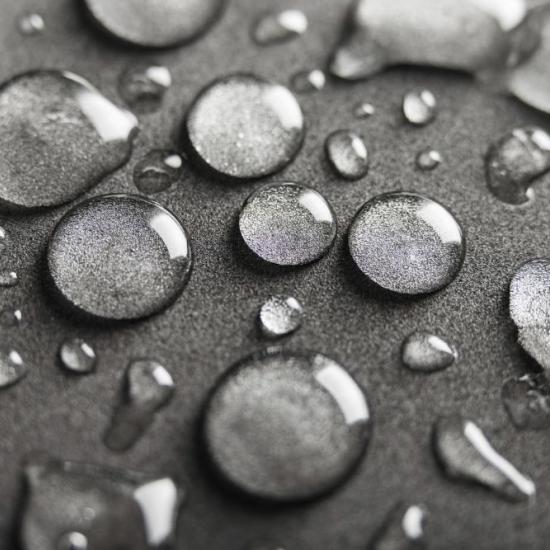‘Flow Coating’ is ideal for coating items with complex geometrical structures. This technology provides a number of interesting benefits when compared to other coating technologies.
Flow Coating involves spraying a component with excessive amounts of paint or lacquer, or applying streams of the coating material to it. The excess coating material that drips off is then collected, filtered and automatically reintroduced to the lacquering system. The application performance is high in comparison with spraying (approximately 90 per cent) and there is almost no loss of lacquer.
In order to obtain a homogeneous layer the coating must be able to flow freely over the surface and so thorough coverage is crucial. Low viscosity coatings are normally used to which surfactant substances are added to promote good flow properties.
As the coating can flow freely over the surface, the entire surface area should be coated evenly, which leaves an excellent film once dry. One advantage is that any dust particles lying on the surface to be coated are swept away by the coating.
Another advantage is that very little coating material is required with this technology because any excess recirculates within the system. This is in contrast to dip coating where the volume of coating must match the components to be coated in order to ensure total immersion.
Flow Coating is normally applied to components suspended vertically, whereby the coating runs off by way of gravity, although there are also processes where components pass under a continuous flow as they move along a conveyor belt. The term 'Curtain Coating’ is often used for this process.
Areas of application
Just as with dip coating, the application of Flow Coating is limited to components that have inaccessible surfaces and cavities and channels. Furthermore, attention must be paid to the thickness gradient that increases from the top to the bottom, something which mainly poses a problem for large parts. The process conditions including humidity, temperature, air displacement and coating viscosity must also be carefully controlled in order to avoid differences in thickness.
The Flow Coating technology is applied to the impregnation of timber window frames, but also applications such as applying scratch-proof coatings to spectacle lenses.
One of the great advantages over the dip coating process is that Flow Coating can be applied to just one side, whereas dip coating covers the entire surface area. This makes the technology interesting for use on spectacle lenses, where a hard scratch-proof coating is applied to the outer surface only in order to protect the lens, and an anti-fog coating is applied to the inside to prevent the lens fogging up.
Sirris uses Flow Coating regularly as a simple method applied to screen experiments or for 3D components when only limited coating fluid is available. Sirris recently provided a customer with plastic profiles for optical applications that have an anti-fogging coat applied using the Flow Coating process. This technology was chosen because only one side of the profiles had to be coated. Apart from that, the geometry of the profiles was ideal for the Flow Coating process and the volume of expensive anti-misting coating used was kept to a minimum.





